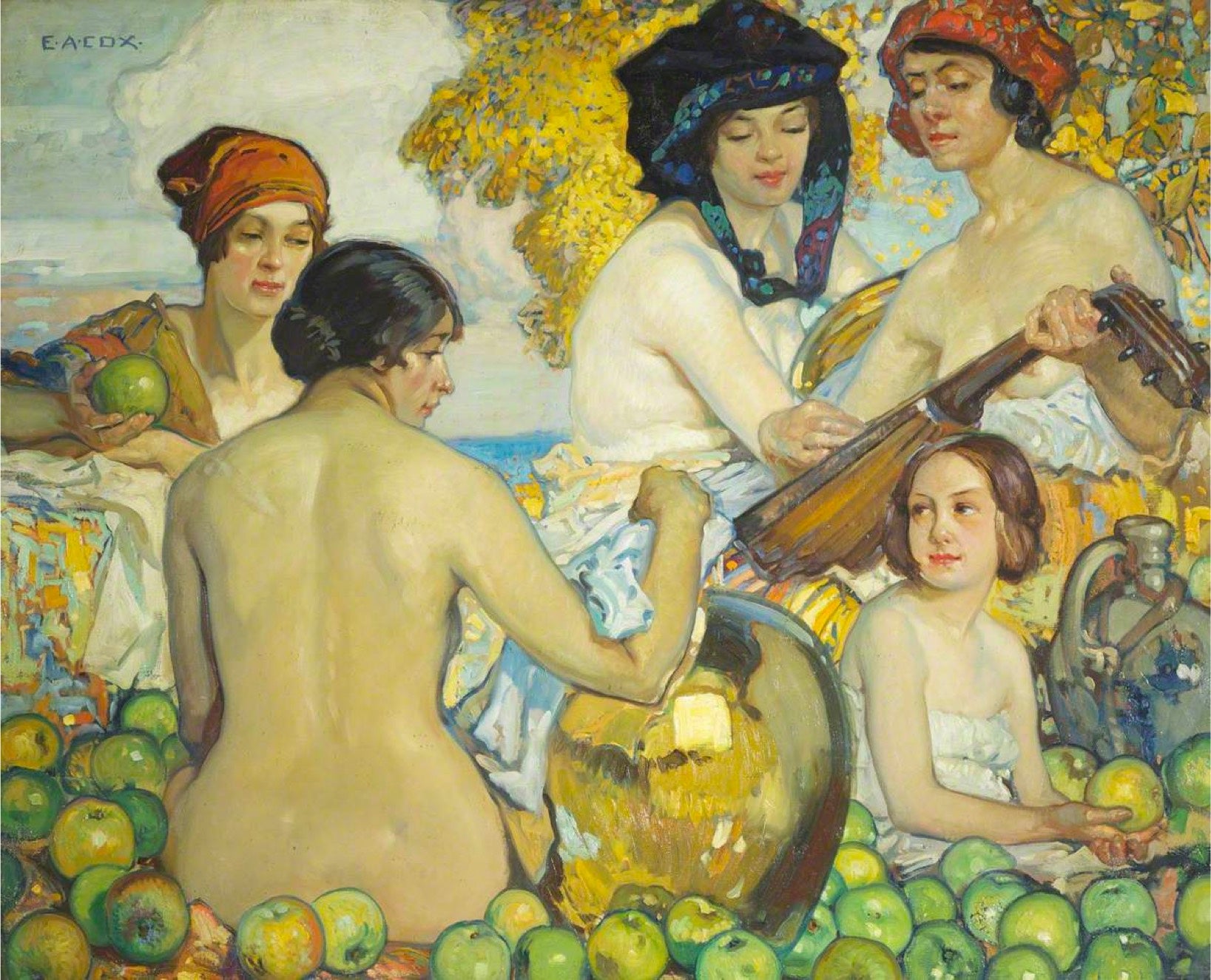Elijah Albert Cox was a British painter, poster artist and illustrator.
Raised amid the frenetic pace of the bustling east end, this London lad soon developed a keen eye for colour, line, and striking compositions. Primarily known for his graphical illustrations, he brought a post-impressionistic vivacity to both his paintings and posters.
East London
The environment in which an artist hones their early skills is often transposed into their work. Early 20th-century Paris, for example, radiated into the spirits of the avant-garde with their progressive views, absinthe, and modernist experimentation. While back in Britain, the Edwardian art scene was generally more pragmatic, with a sense of ‘still upper lip’ still prevalent within the upstanding members of the Royal Academy.
Cox was schooled in East London at the People’s Palace - a charitable centre designed to bring education and culture to Whitechapel. He received little in the way of a formal arts education although his father probably taught him to draw. Throughout Cox’s career, the chaotic streets of the East End seem embedded into his work. As if he somehow captured its vibrancy, bottled it, ground it, and used it for pigment. His works are an amalgam of strong outlines, vivid, yet harmonious, colour schemes, plus a sense of Arts & Crafts. A French influence is also evident and on occasion, we see an echo of Gauguin and a touch of Cezanne.

Elijah Albert Cox, Ann's Youngest Daughter (Royal West of England Academy)
Often, artists with pioneering styles belong to a progressive movement, such as The Glasgow Boys, or Walter Sickert’s Camden Town Group. But Cox was an outlier, forging his own path.
Frank Branwyn
If any comparison could be drawn, it would be with the work of Welsh artist Frank Branwyn (1867-1956). Both shared a kindred energy and captured some kind of unusual electricity within their colour harmonies. The pair must’ve known each other as they were both living in Ditchling, Sussex at one point and collaborated on a significant project.
In 1928, Branwyn had been hauled over the coals by members of the House of Lords following a commission to paint a pair of large canvases to commemorate those lost during World War I. The resulting works were deemed too depressing so, instead, he was tasked with producing a series to celebrate the British Empire.
Known as the British Empire Panels, this involved the creation of 16 large works to cover around 3,000 square feet. With such a task ahead, Branwyn sought the assistance of Cox who worked closely alongside him. Given that Cox’s style had been similar for a number of years, it’s likely they already knew each other well.
But alas, upon completion of the Panels, the Lords again rejected them, this time deeming the lively work “too colourful”. They now reside in Brangwyn Hall, Swansea.
London Characters
Prior to this commission, Cox had been working on numerous posters for London Underground and it’s these that he’s most known for. He also produced the graphics for a series of posters titled ‘London Characters’. Plus various book illustrations, most notably for Edward Fitzgerald’s ‘The Rubaiyat of Omar Khayyam’ in 1944.
Towards the end of his life, Cox moved to Canterbury, Kent. Escaping the pace of London for quieter environs. His mother was from Maidstone, so he probably had family nearby. It was here he died in 1955.
During his lifetime, Cox exhibited at the Royal Academy, Royal Institute and Victoria and Albert Museum. And today he’s represented in numerous public collections including at the British Museum, London Transport Museum, Manchester Art Gallery, and Portsmouth Museum.
The National Portrait Gallery holds a splendid collection of photographs by Howard Coster.
1876
Born in Islington, London, England to William Cox, a decorator/artist, and Avis Cox.
Trained at the People’s Palace Technical School, Whitechapel, and later at Bolt Court School.
1891
Living in Bethnal Green, London, England.
1901
Married Annie Benstead.
Living in Mile End, London, England. Occupied as an ‘Artist Designer’.
1911
Living in St John-at-Hackney, London, England.
1915-1926
Designed various posters for the London Underground.
1928-1932
Worked alongside Sir Frank William Brangwyn RA RWS RBA (1867-1956) on British Empire panels.
1944
Illustrated ‘The Rubaiyat of Omar Khayyam’ by Edward Fitzgerald.
1955
Died in Canterbury, Kent, England.

